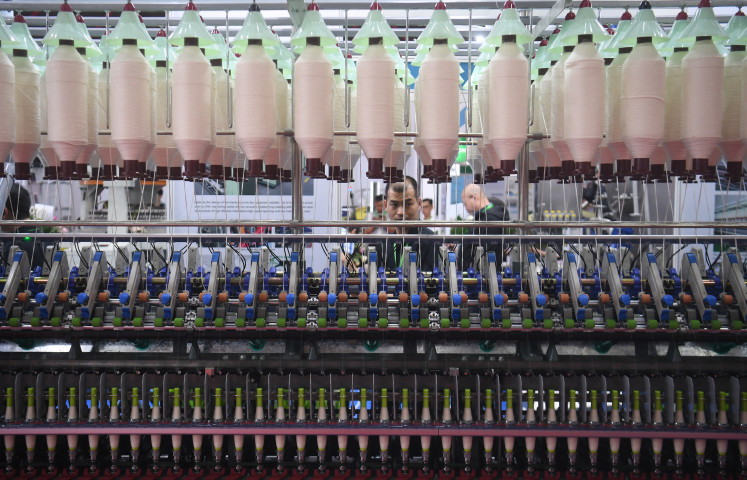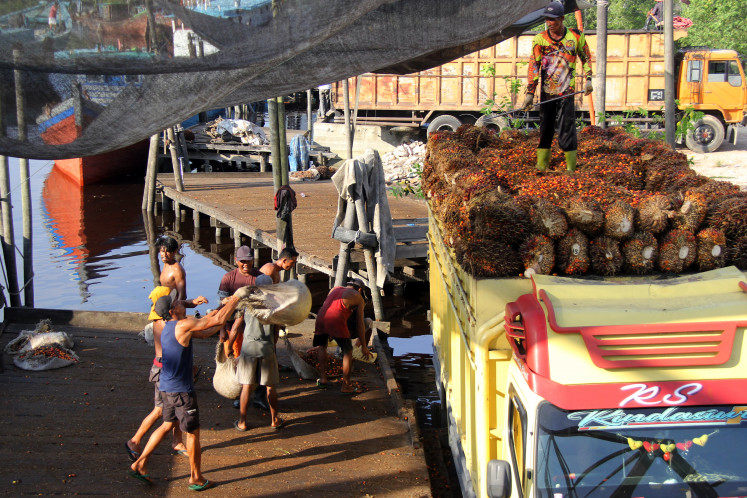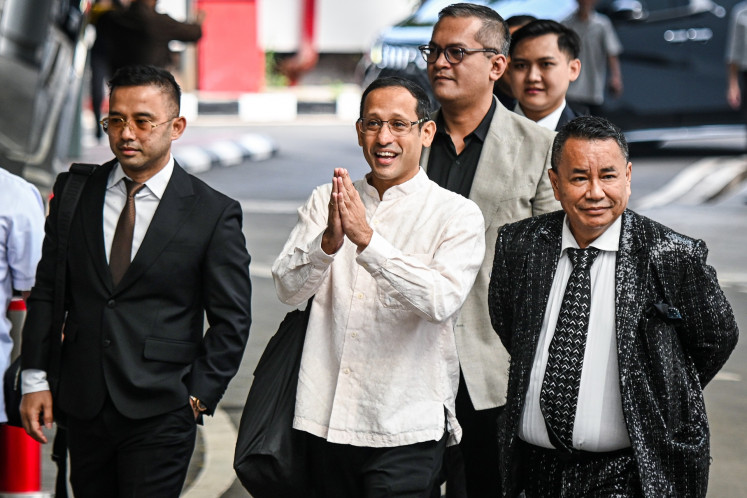Popular Reads
Top Results
Can't find what you're looking for?
View all search resultsPopular Reads
Top Results
Can't find what you're looking for?
View all search resultsTracing plagiarism makes cheating hard
In the educational sphere, plagiarizing a scientific work is an unpardonable sin
Change text size
Gift Premium Articles
to Anyone
In the educational sphere, plagiarizing a scientific work is an unpardonable sin. In reality, however, copying data from the Internet or from a library is quite a common practice.
Ironically, although plagiarizing is allegedly widespread, until now it has been difficult to trace it.
Even if one or two cases have been discovered, most probably it was accidental -- for example, when someone whose work has been plagiarized happens to read this plagiarized work.
Didi Achajari demonstrates the Test of Text Similarity (TESSY) computer program that he and his colleagues designed to detect plagiarism. (JP/Slamet Susanto)
"Practices of plagiarism are still rampant although I do not have concrete data about it," said Didi Achajari of Gadjah Mada University (UGM) School of Economics and Business in Yogyakarta.
Today, to write a scientific paper for any university level, many people will only visit a library or access the Internet. They will look for a number of papers with the same theme, quote here and there from these papers without mentioning the names of the authors and another scientific paper is born.
Another option -- which is an open secret -- is that to write a university paper you only have to go to Yogyakarta's bookshop center and pay some money to have a scientific paper written -- but that's another story.
Knowing that is is difficult to trace plagaiarized work but wanting to do something about it, Didi and a number of other UGM lecturers have for three years now been trying to design special software to help track it.
Together with Dimas Mucklas, Arman Rohiman and Ajeng Nurhidayati, Didi has been experimenting with and designing the software since 2006.
After countless experiments, they eventually successfully designed a software application called Test of Text Similarity (TESSY) in mid-2008, which will help determine whether or not a particular scientific work is the result of plagiarism.
TESSY works on two categories, namely a text similarity test and a phrase similarity test.
The former test is used to calculate the percentage of the tested document's similarity with an existing document.
When a new paper, for example, is put into the computer which has the TESSY program, it will be automatically compared with other papers in the directory.
The percentage results will allow a lecturer to further assess whether or not this particular paper is the result of plagiarism.
"This text similarity test is not intended to determine whether a particular paper is indeed the result of plagiarism. Instead, it is a tool a lecturer can use to help make that decision," Didi said.
Didi then demonstrated to The Jakarta Post the second method, namely a phrase similarity test.
Like the first test, TESSY will show the percentage of the phrases in a particular paper that are similar to those in another paper.
Then Didi typed into his computer a five-word economics' definition. Using TESSY, he could see that a number of other phrases in one paper were the same as those in another.
A text similarity test showed that this paper had a 40 percent similarity to another paper.
"Finally we checked the paper and could prove that it had been plagiarized.
"We found two students and did not pass them."
According to Didi, although it still needs to be developed further, TESSY will make it easier for lecturers and institutions to recognize this deceit. Whether or not a particular paper is plagiarized from another paper can be seen from text and phrase similarities.
The TESSY application is still very limited in scope -- unlike the search engine Google, in which clicking on just one word reveals many options related to this word, Didi said.
The software can only detect plagiarism from the data already stored in the directory. Even this will not cover everything as the application will only deal with specifically selected data.
"I've had complaints. For example -- that to check someone's paper against the data base in the School of Economics' library still takes of lot of time," Didi said.
Even with its limitations, the application is now being used in UGM's School of Economics and Business.
To facilitate its application, the library's database is being arranged thematically. So, to test a particular work, it only neeed to be checked and compared with other works of the same theme -- not with the library's entire database.
Developed in the School of Economics through the establishment of the Integrated Information System of the School of Economics and Business, TESSY was the winner at the national level of the Acer Intel E-Learning Competition held in Sept. 2008.
For security reasons, TESSY uses two types of PDF data and therefore all students proposing to write a thesis, a dissertation or other scientific paper will be required to create a soft copy of their work in PDF format.
Head of UGM Public Relations, Suryo Baskoro, said TESSY would help a university maintain its academic authority.
"Never should anyone dare to commit plagiarism at UGM today," Suryo said.
UGM is now working to apply TESSY on a larger scale, in this case at in every department, he said.
In the future, all scientific papers at UGM will be subjected to the TESSY tests.
With this software, cheating will become a trickier business.










